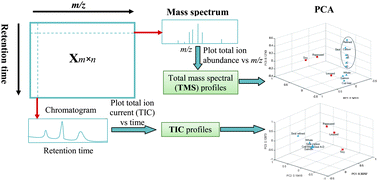Evaluation of different fingerprinting strategies for differentiating marine oils by liquid chromatographyion-trap mass spectrometry and chemometrics†
Abstract
Assessing the capabilities of instrumental techniques aiming at differentiating marine oils is a matter of great importance for both authorities and industries which has been highlighted over 120 years. In this study, different strategies were evaluated by means of principal component analysis (


 Please wait while we load your content...
Please wait while we load your content...